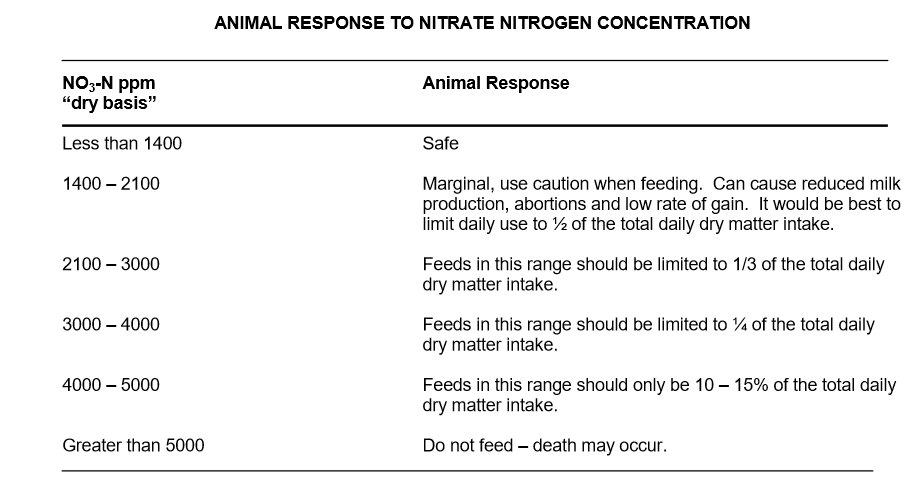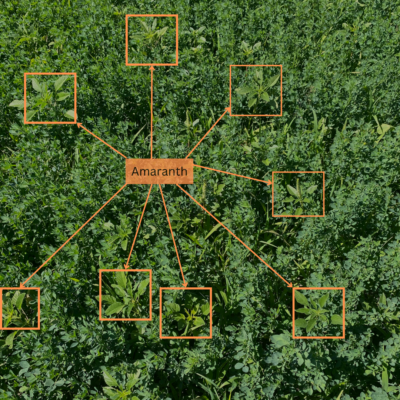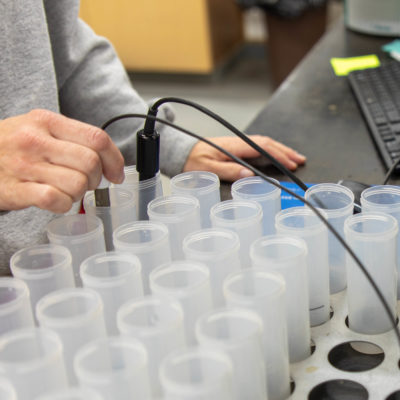Last week I attended both the Colorado Cattlemen’s Annual Convention and the Sandhills Ranch Expo at the Ward Laboratories Inc tradeshow booths. At both locations, producers had concerns about nitrates. The climate and weather however were contrasting conditions. Colorado producers wondered how drought stress might affect the nitrate levels in their forages, while Nebraska and South Dakota producers were concerned if too much precipitation might have affect nitrate levels in forages. Here are 5 factors that affect how nitrates accumulate in forages.
- Plant Species
Some plant species accumulate nitrates more than others. These species should be tested for nitrates regularly before feeding to animals. These species are: sorghum (milo), sudan grass, millet, oats, johnson grass, broadleaf weeds, corn and sunflowers. There are other species which also accumulate nitrates but not to the same extent as those listed above: wheat, rye, and triticale fall into these categories. Finally, under extreme stress alfalfa and soybeans can accumulate nitrates, however the stress must be extensive, and this situation is very rare.
- Maturity of the Plant
Young plants and regrowth take up nitrogen from the soil faster than it can be converted to protein. Older more mature plants take up nitrogen at a slower rate and have had plenty of time to convert nitrogen to protein. Therefore, younger plants and regrowth tend to accumulate more nitrates than older mature plants.
- Plant Part
The lower 1/3 of the stock of the plant is where the most nitrates are stored. Leaves and stems do not store nitrates in the plant. When grazing, leaving the last third of the stock might be a good idea to avoid any nitrate toxicity issues.
- Environmental Conditions
Stress due to weather or climate may increase nitrate accumulation. During drought stress, the plant may be able to take up nitrogen but not have enough moisture to convert it to protein. On the other hand, coming out of a drought a dramatic increase in moisture may cause the plant to take up more nitrogen than it can convert to protein in a timely fashion. Frost and freezing temperatures also cause stress to the plant and nitrate accumulation.
- Management
Nitrogen fertilization is a common cause of nitrate accumulation in forages. Nitrogen fertilization may increase yield, but it also increases risk of nitrate toxicities.
Nitrates are tricky. I often run into producers who want to tell me their situation and management practices and ask if they need to test. The truth is no one can determine the nitrate levels based on an antidote. Testing is the only way to have full confidence. If there are concerns, send forage samples to Ward Laboratories, Inc for a nitrates test and use the table below as a guide to interpert your report.






[…] have covered nitrate toxicity in other blogs including: Do I Need to Test for Nitrates?, 6 Cautions When Grazing Cover Crops, and 4 Considerations for Feeding Hail Damaged Forage and Crop […]
[…] have covered nitrate toxicity in other blogs including: Do I Need to Test for Nitrates?, 6 Cautions When Grazing Cover Crops, and 4 Considerations for Feeding Hail Damaged Forage and Crop […]
[…] animal’s blood would be chocolate brown due to the lack of oxygen binding to hemoglobin in nitrate toxicity. This also would allow for a producer to test the fed bale for nitrates to see how it compares with […]
[…] Nitrates are often the first thoughts when an abortion storm begins. Most producers are aware of their toxic effect and often test their forage sources for nitrates. Some producers still choose to risk it and when they do experience abortions they bring their forages to Ward Laboratories, INC. for testing after they have already lost at least one calf. This time of the year, cows and heifers are out on pasture and producers are also fertilizing. Consumption of fertilizer granules could be an unforeseen cause of nitrate poisoning resulting in calf losses. […]